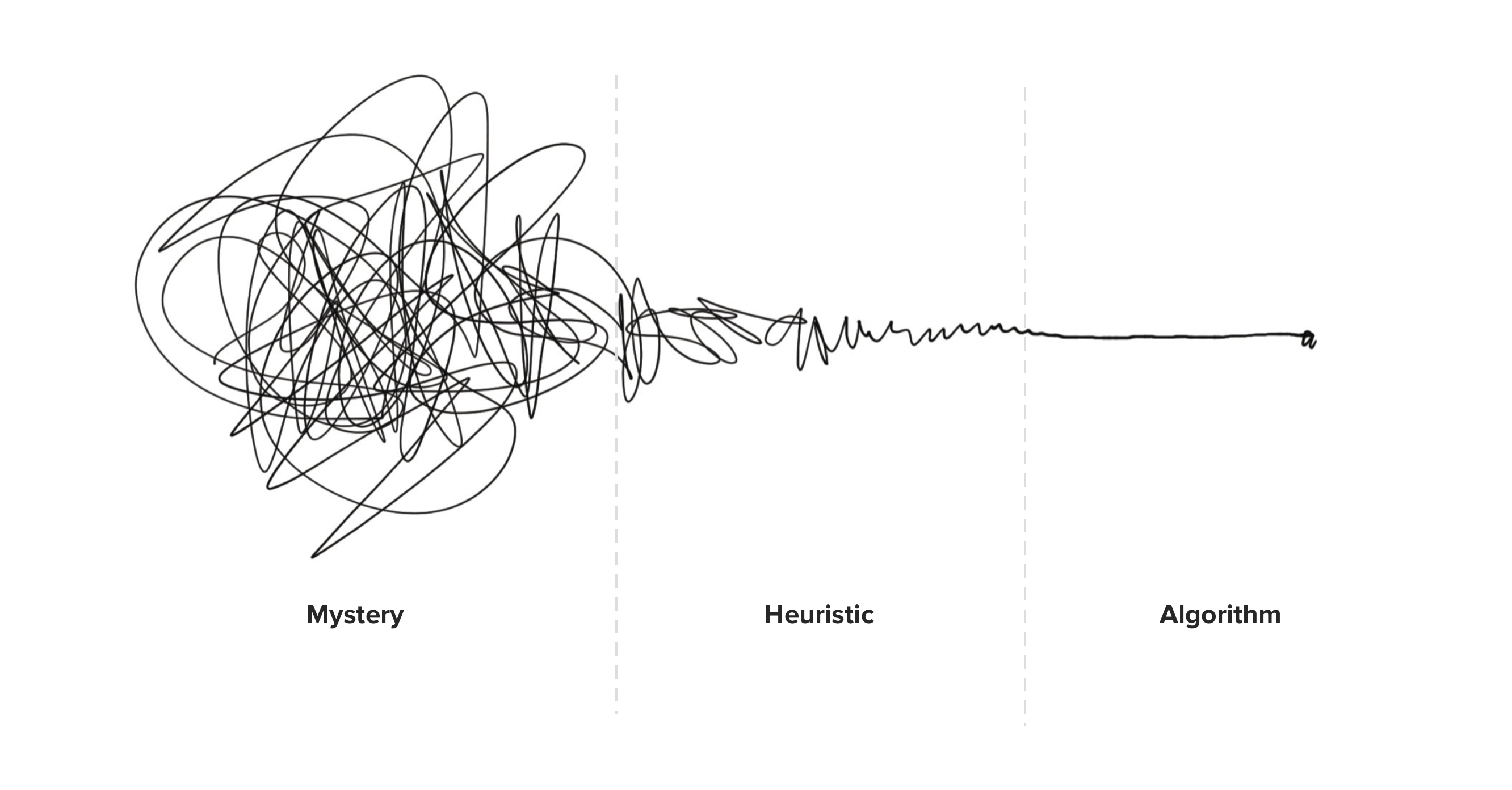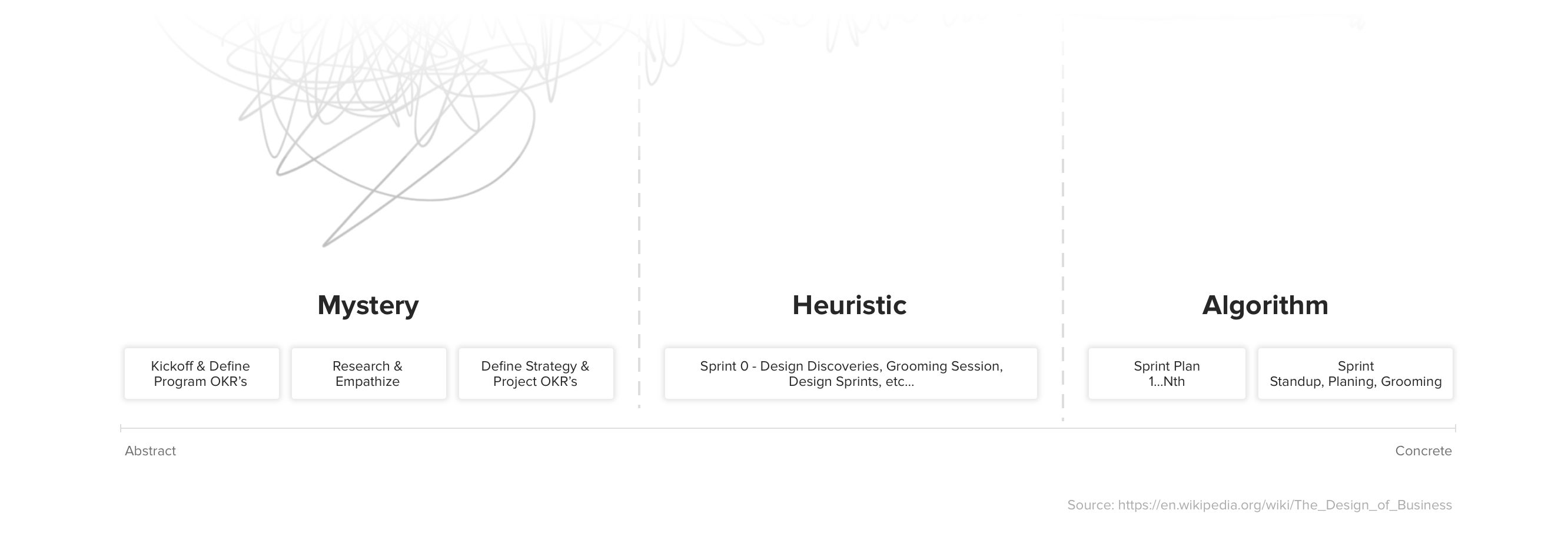🐛 Process, a test in patience.
Forward
I love prototyping. A prototype can and should be introduced at any part of a process. When they say a prototype is worth 1,000 meetings, they aren't kidding. I've never walked out of a room without the next steps after talking through a prototype.
Process
When I get asked, “What do we do next?” I respond with: "What are you trying to accomplish, and why?." It's a simple set of questions that allows a team to discuss an idea or context and build toward a shared understanding of what we are building as a team. Every question demands a slightly tailored process to find its appropriate solution. It's nothing new, just old-fashioned curiosity and the willingness to get out and talk to other people. I believe when the end customer is served first, the rest of the business puzzle pieces fall together.
Below is a chart and concept from Roger Martin. To me, any problem can first be put into one of three buckets: Mystery, Heuristic, and Algorithm. From there, a process can be drawn up and executed.



